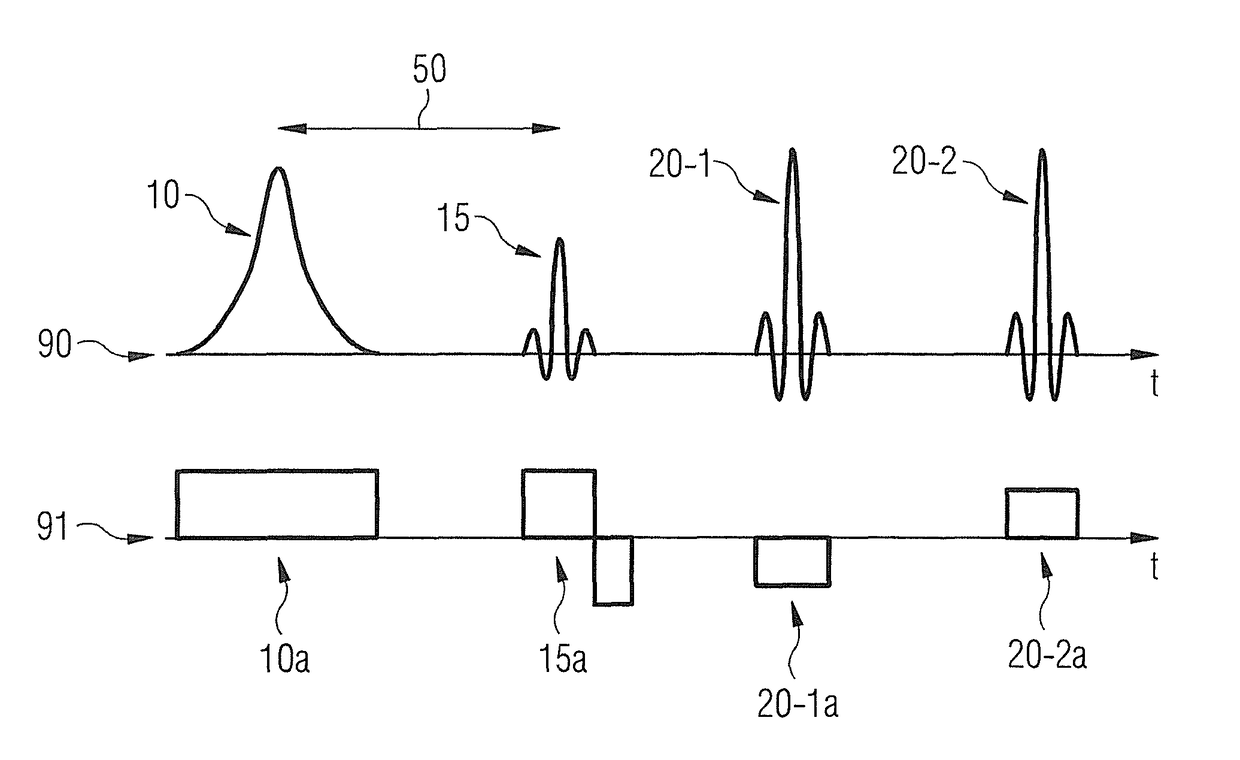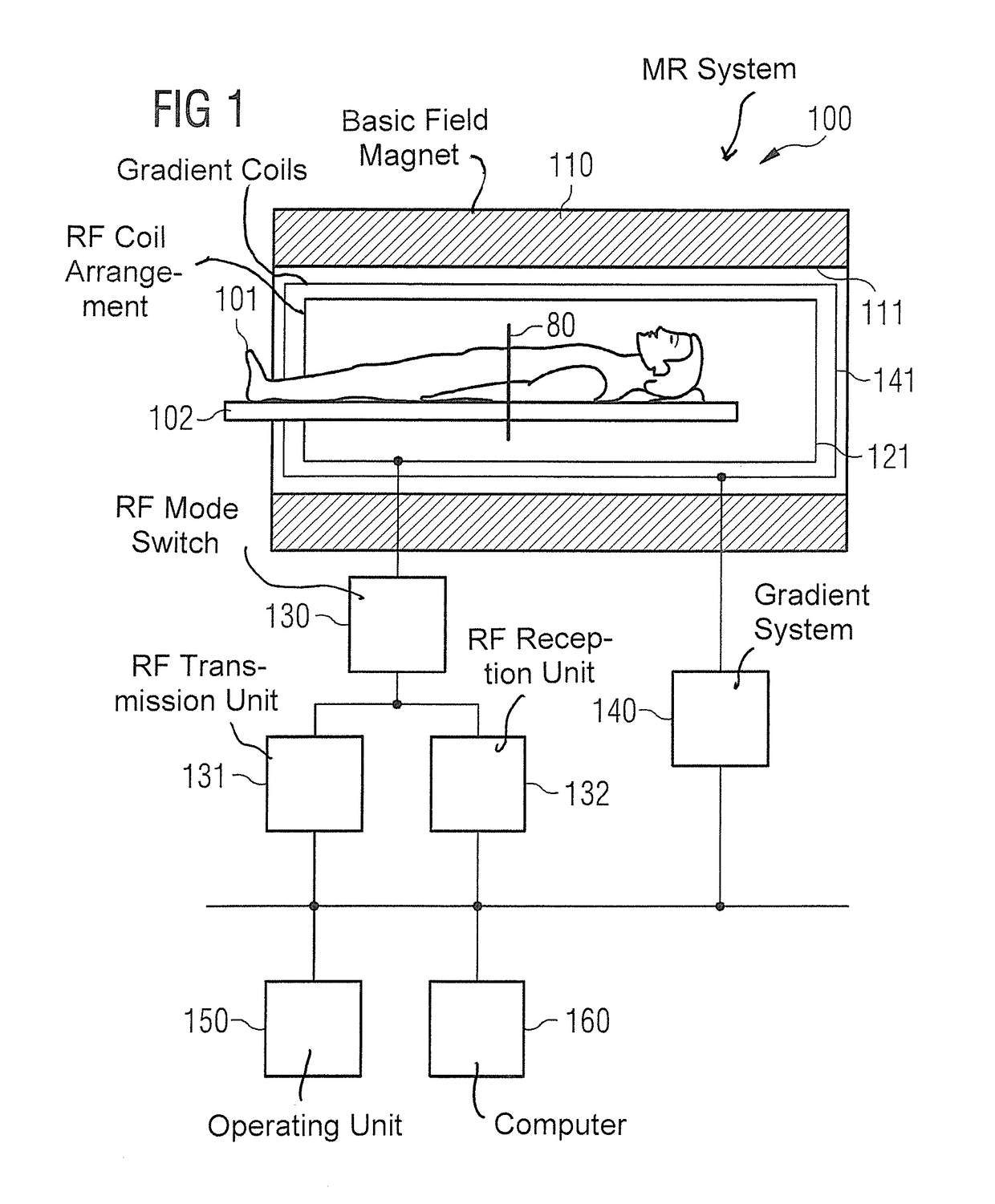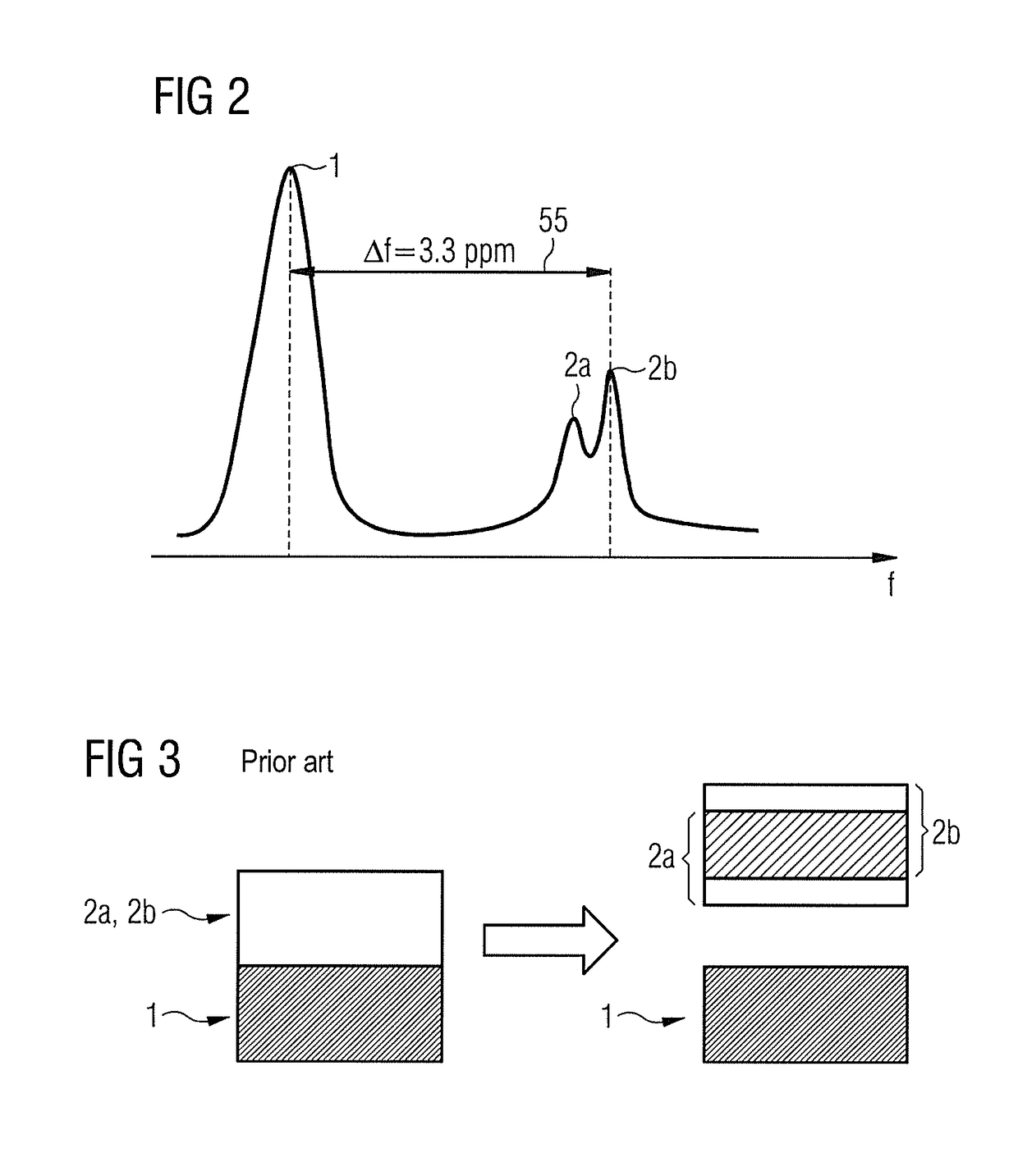MR imaging with signal suppression of a spin series
a technology of signal suppression and mr imaging, applied in the field of mr imaging with signal suppression of a spin series, can solve the problems of increasing measurement duration, affecting diagnosis, and relatively long preparation time, and achieve good signal suppression
- Summary
- Abstract
- Description
- Claims
- Application Information
AI Technical Summary
Benefits of technology
Problems solved by technology
Method used
Image
Examples
Embodiment Construction
[0107]In the following, the present invention is explained in detail using preferred embodiments with reference to the drawings. In the figures, identical reference characters designate identical or similar elements. The figures are schematic representations of various embodiments of the invention. Elements shown in the figures are not necessarily represented true to scale. Rather, the different elements shown in the figures are rendered such that their function and general purpose are understandable to those skilled in the art. Connections and couplings that are shown in the figures between functional units and elements can also be implemented as indirect connections or couplings. A connection or coupling can be implemented in a hardwired or wireless manner. Functional units can be implemented as hardware, software or as a combination of hardware and software.
[0108]In the following, techniques are described that are used for an MR measurement (data acquisition) of a first spin spec...
PUM
 Login to View More
Login to View More Abstract
Description
Claims
Application Information
 Login to View More
Login to View More - R&D
- Intellectual Property
- Life Sciences
- Materials
- Tech Scout
- Unparalleled Data Quality
- Higher Quality Content
- 60% Fewer Hallucinations
Browse by: Latest US Patents, China's latest patents, Technical Efficacy Thesaurus, Application Domain, Technology Topic, Popular Technical Reports.
© 2025 PatSnap. All rights reserved.Legal|Privacy policy|Modern Slavery Act Transparency Statement|Sitemap|About US| Contact US: help@patsnap.com



